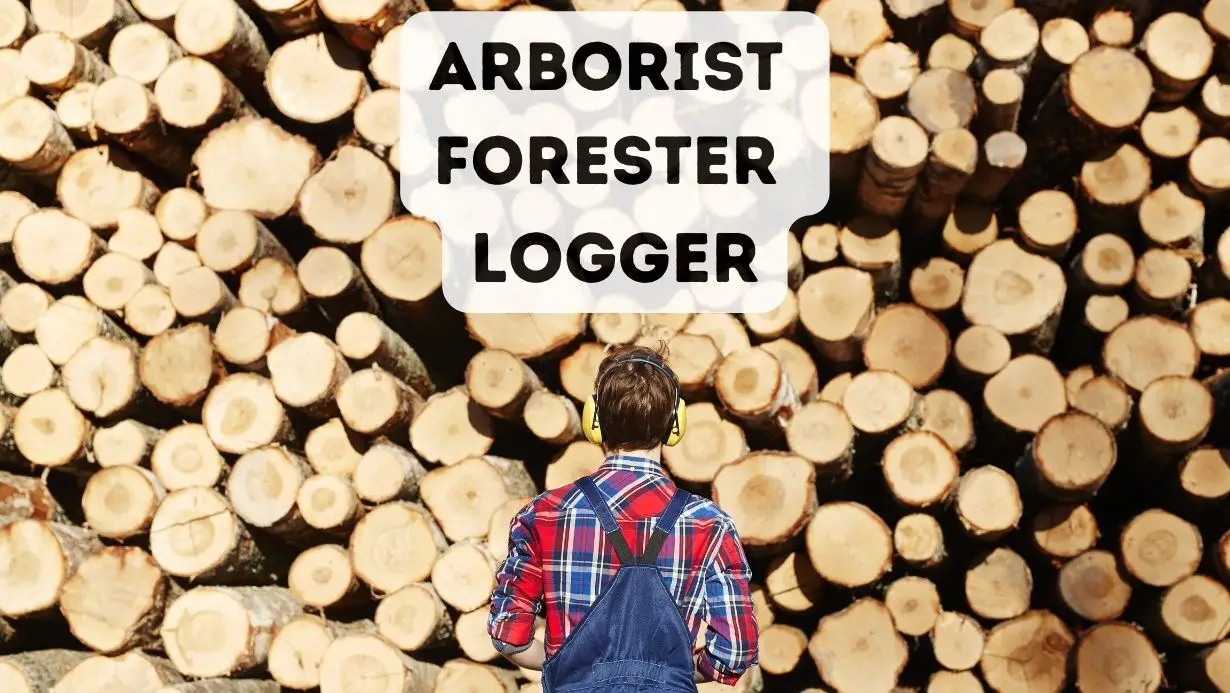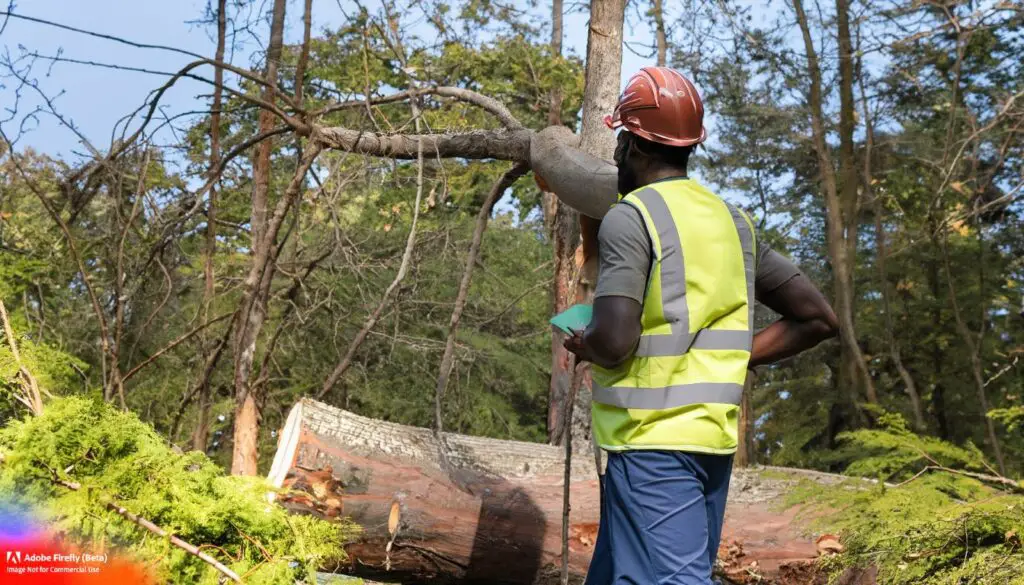
For anyone looking to get into a forestry-related career, it’s important to know the difference between an arborist, forester, and logger.
While there is some overlap between these professions, they each have their own distinct job duties. In this blog post, we will explore the differences between an arborist, forester, and logger.
We will also touch on the similarities between these three professions and what you can expect from each one.
Arborists
An arborist is a tree surgeon who has specific training in the care of trees.
Arborists are typically employed by tree companies, utility companies, and municipalities.
Foresters
A forester is a professional who manages forests. Foresters typically work for state or federal agencies, private companies, or nonprofits.
Foresters are responsible for the management and conservation of forests. They develop plans to ensure the sustainable use of forest resources and implement those plans through the application of sound silvicultural practices.
In addition to their work in developing and implementing management plans, foresters also play an important role in educating the public about the importance of forests and proper stewardship of these valuable resources.
Loggers
Loggers are workers who fell trees and process the lumber from those trees.
Loggers typically work for logging companies or sawmills.
A logger is someone who cuts down trees and collects the lumber.

The difference between the three occupations
The main difference between an arborist, foresters, and loggers is the focus of their work. An arborist is primarily concerned with the health and safety of individual trees, while a forester manages forests and woodlands for conservation purposes, and a logger harvests timber.
While all three occupations involve working with trees, there are some key differences that set them apart.
Arborists are tree experts who focus on the health and safety of individual trees. They use their knowledge of tree biology to assess the condition of trees and make recommendations for their care.
Arborists need to be able to identify different species of trees and understand their biology. They also need to know how to care for trees so that they remain healthy.
Foresters manage forests and woodlands for conservation purposes. They develop plans to protect these ecosystems and ensure that they are sustainable for future generations.
Foresters need to have a good understanding of ecology so that they can develop management plans that protect forest ecosystems.
Loggers harvest timber from forests. They use a variety of equipment to fell trees and remove them from the forest safely.
Loggers need to be skilled in using a variety of tools and equipment to fall trees safely.
Which is the best for you?
When it comes to choosing between an arborist, forester, and logger, it ultimately depends on what you need.
If you need someone to care for your trees, then an arborist is likely the best choice.
If you need someone to manage a forest, then a forester is probably the best option.
And if you need someone to harvest timber, then a logger is probably your best bet.
How to become one?
Becoming an arborist, forester, or logger is a process that takes many years of hard work and dedication.
These professionals have to go through extensive training in order to become certified in their field.
The first step to becoming an arborist, forester, or logger is to obtain a degree in forestry from an accredited university.
Once you have obtained your degree, you will need to take the state examination in order to become licensed.
After you have passed the state examination, you will need to find a job with a company that specializes in tree care.
Once you have been working in the field for a few years, you will be able to take the International Society of Arboriculture (ISA) certified arborist examination.
The job of an arborist
An arborist is someone who works with trees, and a forester is someone who works with forests. Loggers are people who cut down trees. The three jobs are often confused, but there are some important differences.
An arborist is trained in the care of trees; they assess the health of individual trees and make recommendations for their care. They may also be involved in tree removal or transplanting. Arborists typically work for tree service companies or municipalities.
The job of a forester
A forester is responsible for the management and conservation of forests. This includes tasks such as planning for the sustainable use of forest resources, developing forest management plans, monitoring forest health, and conducting research on the impact of humans on forests.
Foresters typically work for government agencies or private companies that manage large tracts of land. They may also work for environmental organizations or schools and universities.
A forester is someone who manages forest resources; they may be involved in activities such as timber harvesting, fire management, or reforestation.
The job of a logger
As the name suggests, loggers are responsible for felling trees and preparing them for transport to sawmills or other processing facilities. Loggers typically work in forests and other natural areas, although they may also be employed in urban settings such as parks.
Loggers harvest timber from forests; they fell trees and transport the logs to sawmills or other processing facilities.
Loggers typically work for logging companies or contractors that provide timber to mills or other customers.
Logging is a physically demanding occupation that requires workers to use chainsaws, axes, and other tools to fall trees.
In addition to felling trees, loggers may also be responsible for trimming branches and cutting logs into manageable lengths. Loggers typically work long hours, including early mornings and evenings, and weekends.
Although logging can be dangerous, most accidents are preventable if workers follow safety guidelines and take precautions such as wearing protective clothing and using safety equipment.
Tree trimmers vs pruners vs arborists
Tree trimming, tree pruning, and arboriculture are all terms that are often used interchangeably, but there are actually some subtle differences between them.
Tree trimming is the general term that refers to the removal of any dead, diseased, or damaged branches from a tree.
Tree pruning is a specific type of trimming that is done to improve the health or appearance of a tree. Arboriculture is the science and art of caring for trees and shrubs.
Arborists are trained in the proper techniques of tree trimming, tree pruning, and arboriculture. They have the knowledge and experience to safely and effectively care for trees.
Foresters are trained in the management of forests and woodlands. They may not have the same level of training or experience in caring for individual trees. Loggers are trained in the felling and harvesting of trees. They may not have the same level of training or experience in caring for individual trees.
Is a forester a logger?
Foresters and loggers are both professionals in the forestry industry, but they have different roles.
Foresters are responsible for the management of forests and woodlands. This includes planning and coordinating the sustainable use of forest resources, as well as conserving forests and woodlands.
Loggers, on the other hand, are responsible for felling trees and transporting them to sawmills or other processing facilities.
While both foresters and loggers work in the forestry industry, their roles are quite different. Foresters focus on the management of forests and woodlands, while loggers are responsible for felling trees and transporting them to sawmills or other processing facilities.
Conclusion
It’s important to know the difference between an arborist, forester, and logger before you hire someone to work on your property. Arborists are trained in the care of trees, shrubs, and other woody plants. Foresters are trained in the management of forests and timberlands. Loggers are trained in the harvest of trees for forest products. All three occupations require different levels of education and experience. Knowing which one you need will help you choose the right person for the job.
